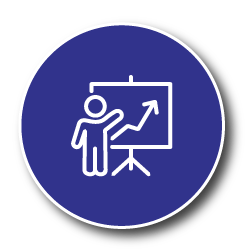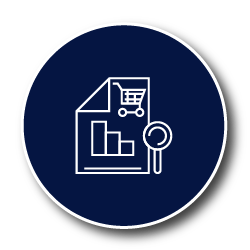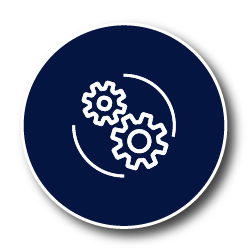Do you want to be a successful and effective project manager? Do you want to impress your colleagues and show your worth? Do you want to be more effective in driving and completing projects? Of course, you do. But how do you get there? The answer is simple: you need a framework. In this case of project management, that framework or process is the project lifecycle.
If you want to be more efficient at managing any project, you need to not only know about the framework. You also need to understand everything therein. That's what you can expect in this article. We unpack the various phases of the project lifecycle framework, digging into the questions worth asking to help you plan your next project.
For context, there are four stages or phases that make up the project life cycle. They are Ideation, Planning, Execution, and Closure.
Some argue that there are five with the fifth being Control. However, instead of a separate phase, you should be controlling or monitoring your project plan through the other four phases.

Phase 1: Ideation
The first phase of any project life cycle - ideation - refers to the conceptualisation or initialisation stage. In short, you're identifying a problem or opportunity that you want to address and settling on possible solutions.
Let's say, for example, you're a small retailer and you've identified that you're not utilising your shelf space efficiently. It could be because you are about to bring in a new line and you've realised you need help deciding how much space to give the product without affecting sales for the rest of your store. Or, you've noticed a dip in sales for the past three months and you need a fresh perspective on how to improve your business.
Once you've identified the problem, you'd want to brainstorm a few solutions. One solution could be to invest in specialised software. Next, you need to ask a series of questions. You’d base all these questions on the proposed solution.
One question to ask in response is “Should you take on this project?”. Here, it's about justifying the approach and figuring out whether or not it’s necessary to take it on or whether it’s a luxury. Will it add value to the business or not? In this case, you want to improve your sales and please your customers so it wouldn't be that hard to justify why you’d create a project.
Another question is “Will the project solve the problem that you’re facing?” If we look at the above example, sourcing specialised software, which uses data to help retailers to be more efficient with their shelf space can solve the issue.
A final question is “Can you do this project”. You could break this question into two parts. On the one hand, it refers to the financial aspects of the project. Are you in the best financial position to take on this project with the proposed solution? If not, you may need to rethink your solution.
If you can invest money into the solution, then you could move to the second part - do you have the manpower available to run such a project? Here, it’s about ensuring that you have someone or a team dedicated to seeing the project through to fruition.
After you have answered these questions and had your proposed solution signed off, it’s time to set up your project plan.

Phase 2: Planning
Having decided on a proposed solution, the next stage is to create your plan. This phase is about developing and managing all the details to ensure the successful completion of the project.
That's why you might also hear many refer to it as project scoping because it helps you to determine everything. That includes giving your project a purpose, listing all the risks you may encounter, adding all the tasks you need to complete as well as resources, budget, timelines, and dependencies.
Let’s say you already have specialised software, which you use to create data-driven planograms for your store. And, you want to roll out new planograms for a specific category.
As part of your project setup, you’d need to set up your timelines and include any observers to ensure transparency. Then you’d need to ask a series of questions. For example, what is the project purpose? Then, what are some project risks that you need to be aware of before you begin? Also, do you have a high-level description of the project that you can easily understand?
With software such as Activ8, which has a project management function, you can create projects and answer these questions and more. You can add details around your resources and budget, include any necessary documents and notes and more. All this will help you to maintain control over your project.
That aside, at this stage, with your project plan in place, you will want to begin allocating tasks so that you can begin executing your plan.
If you’re looking for further reasons why you need a project plan, you only need to read our article on a beginner’s guide to project planning. A few benefits include better communication and the ability to create a culture of transparency.

Phase 3: Execution
Once you have everything in place - and you’re satisfied that you’ve scoped everything out - it’s time to execute it.
It’s during this phase where you’ll find out whether or not your plans were as thoroughly planned out as you had expected.
It’s also generally accepted that as a project manager, you’ll likely spend most of your time in this phase. That’s because you need to continually monitor the performance and control everything to ensure that everything runs as it should.
As part of this phase, questions you’d ask include amongst others: “Is the project on budget?”, “Is the project running on time?”, and “Are you using your resources efficiently?”.
If we take the project example of rolling out planograms and consider the timeline you established at the beginning of your project, are you on time? How is work progressing? Are there any roadblocks or issues that your team has encountered as they’ve completed their work?
During this phase, reporting plays an important part in successful project management. You’d need everyone involved to keep you informed so that you can maintain control.
In the case of roadblocks, if you encounter one and you find that you’ll struggle to bring the project back onto the original and intended path, you need to be flexible enough to change the scope of your project with minimal disruption.
It’s worth pointing out that changing the scope doesn’t need to be drastic. It could mean changing a deadline to coincide with any roadblocks that are out of your control or including additional steps to ensure that you can complete your project on time.

Phase 4: Closure
The final phase of a project lifecycle is Closure. Also known as the termination phase, you’d only enter this stage once you have completed your project.
As part of this phase, it’s all about reporting back on whether or not you were able to meet the criteria that you set out at the beginning of your project.
At this point, you’d also need to be honest and consider everything that happened during the life cycle of your project. That’s where a closure template comes into play. With such a template, you can set up various questions about your project.
For example, were there any critical mistakes that you made during your project? That can be mistakes committed during the planning stage as well as the execution stage. Could you have been more efficient with a particular aspect of the project? Did you allocate enough budget or did you need to increase it halfway through?
Of course, you shouldn’t only focus on the negatives. It’s also important that you consider all the positives so you can look to recreate them in future projects. Did you finish ahead of schedule? If yes, can you pinpoint the reason why?
Conclusion:
Activ8 is team management software for retail with project management functionality. If you’re interested in creating, managing and seeing successful projects through to completion, Activ8 is for you. Learn more by scheduling a complementary consultation with one of our sales consultants below.


